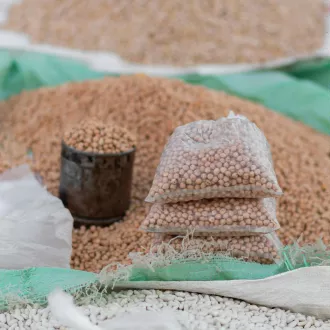Transcription Nutrient density in vegetarian nutrition.
Nutrient density is one of the most important elements to assess in the personalization of our diet. If we do not have a thorough knowledge of the content of nutrient density, we will end up preparing a biased and unproductive diet for the practical purposes we need. This summary can be complex. To thoroughly understand everything about it, we will review the basics of nutrient density and the practical purposes it has in the foods we eat every day, so that you can get more out of your nutritional plans.
What is nutrient density?
Nutrient density is a concept used to determine the level of participation of a nutrient in correspondence to the energy value of the food. It is a measure of the calorie-nutrient ratio in a given product. Foods with the highest amount of nutrients are not necessarily going to be the healthiest or the most recommended.
What we try with this tool, is to include foods in our diets that have the highest amount of nutrients per calories, the higher this ratio is the healthier the product will be.
Highly nutritious foods: Nutrients are made up of various micronutrients such as minerals, vitamins and other substances necessary for our body. At the same time, macronutrients, which are very necessary for the correct balance of our diet, also make up the nutrients.
A food has a higher nutritional density if it provides more nutrients per calorie than another. What we must do, taking into account the above, is not to be guided only by the caloric content of a food, but to realize that this low caloric content is correctly justified with a high nutrient load. This is where we find the first mistake, since many times we end up buying products that provide practically no calories but do not provide anything in nutrients either, which is an unnecessary expense.
Misuse of nutrient density: If you do not master nutrient density correctly, you may end up consuming foods that are unhealthy for your body and high in calories. When reading nutritional labels, you may be induced to buy a food because of its apparent high protein content, without considering its relationship to the calories it contains. This will inevitably end up being a poor choice that will result in an increase in your body weight.
Balance the nutrients in your diet: Having analyzed the content of nutritional density and its determining role in shaping our meal plans, it is important to understand the difference between a highly nutritious food and one that has the nutrients we are looking for. As we have previously observed, if a product has a high amount of nutrients in relation to the calories it provides, it is a nutritious food. However, when we think of an orange, we know that oranges are rich in nutrients because they are low in calories. But you are not considering whether you need that specific nutrient, maybe your diet does not seek to provide more vitamins and in that case it is a highly nutritious food but useless at this time for your meal plan.
In any case, assess what kind of nutrients your diet demands, and try to consume the foods that provide fewer calories and are rich in them. Knowing this concept you will be able to make the most of every calorie that enters your body, so that you can access higher quality, more nutritious foods that do not negatively affect the results of your diet.
density






